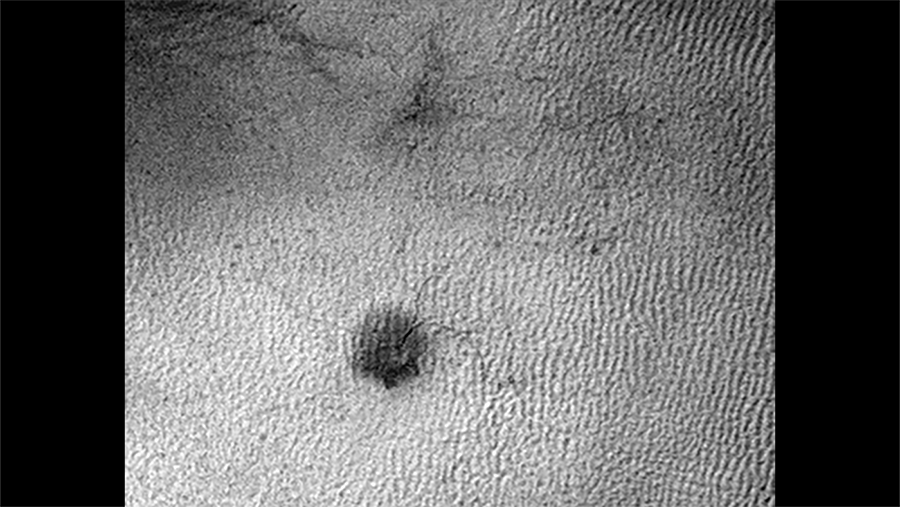This sequence of three HiRISE images from NASA’s Mars Reconnaissance Orbiter shows the growth of a branching network of troughs carved by thawing carbon dioxide over the span of three Martian years. This process may also form larger radially patterned channel features known as Martian “spiders.” (NASA/JPL-Caltech/Univ. of Arizona)
Home This sequence of three HiRISE images from NASA’s Mars Reconnaissance Orbiter shows the growth of a branching network of troughs carved by thawing carbon dioxide over the span of three Martian years. This process may also form larger radially patterned channel features known as Martian “spiders.” (NASA/JPL-Caltech/Univ. of Arizona) This sequence of three HiRISE images from NASA's Mars Reconnaissance Orbiter shows the growth of a branching network of troughs carved by thawing carbon dioxide over the span of three Martian years. This process may also form larger radially patterned channel features known as Martian "spiders." (NASA/JPL-Caltech/Univ. of Arizona)
This sequence of three HiRISE images from NASA’s Mars Reconnaissance Orbiter shows the growth of a branching network of troughs carved by thawing carbon dioxide over the span of three Martian years. This process may also form larger radially patterned channel features known as Martian “spiders.” (NASA/JPL-Caltech/Univ. of Arizona)


